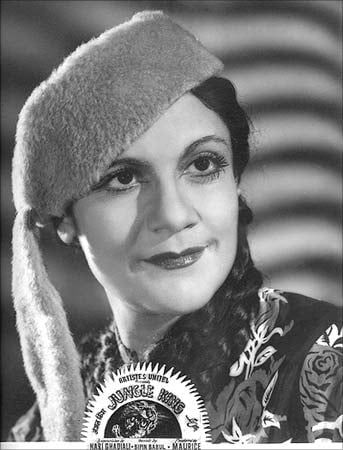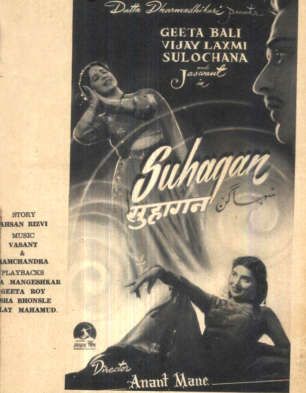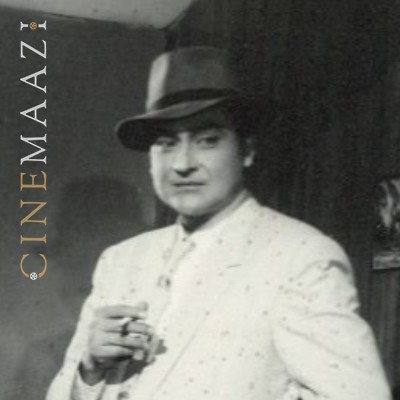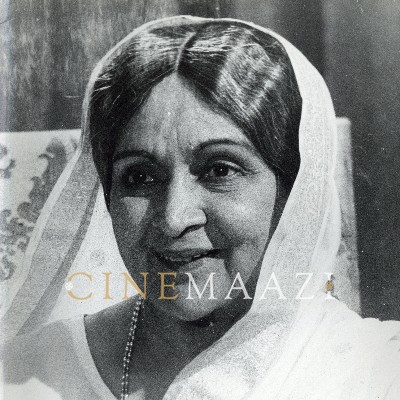D C Mehta
Subscribe to read full article
This section is for paid subscribers only. Our subscription is only $37/- for one full year.
You get unlimited access to all paid section and features on the website with this subscription.
Not ready for a full subscription?
You can access this article for $2 , and have it saved to your account for one year.
- Real Name: Daulatrai Chaganlal Mehta
- Born: 6 September 1914 (Saurashtra)
- Primary Cinema: Hindi
Cinematographer Daulatrai Chaganlal Mehta—better known by his initials D C Mehta or C Mehta—is known for films such as Izzat (1968), Jogan (1950) and Lakhon Mein Ek (1947). He worked as director of photography from the 1940s till 1970.
Born on 6 September 1914 in Saurashtra, among the early films he worked on was the romantic drama of 1939 - Life's for Living: Aadmi. Directed by Shantaram Rajaram Vankudre, it was written by Munshi Aziz, A Bhaskarrao and Anant Kanekar, and starred Shahu Modak, Shanta Hublikar and Sundarabai. He served as an assistant cameraman on this film.
In 1947, he worked as cinematographer on Lakhon Mein Ek. A musical, it was written and directed by Taimur Behram Shah, and had a star cast comprising Khurshid Jr, Nirupa Roy and Ghulam Mohammed.
Jogan, which he cinematographed in 1950, was a romantic drama directed by Kidar Nath Sharma. It starred Nargis, Dilip Kumar and Pratima Devi. The plot revolved around an atheist who falls in love with a devout married woman who has forsaken materialistic life.
In 1964, he cinematographed the historical drama Chitralekha which was directed by Kidar Nath Sharma. It starred Ashok Kumar, Meena Kumari and Pradeep Kumar; it was the first colour feature film of Meena Kumari. The film was based on the 1934 Hindi novel of the same name by Bhagwati Charan Verma about Bijgupta serving under the Maurya Empire and the king Chandragupta Maurya (340 BCE – 298 BCE) and his love for the courtesan Chitralekha. The film's music and lyrics were by Roshan and Sahir Ludhianvi, respectively, who created popular songs such as Sansaar se bhaage phirte ho and Man re tu kaahe na dheer dhare which conveyed the essence of life, namely letting go of the good and the bad. The film was a remake of Sharma’s own Chitralekha (1941), which was the second-highest grossing Indian film of that year. This 1964 film did not fare as well at the box office, with poor screenwriting and incorrect casting being later cited as possible reasons for its lack-lustre performance.
Chandan Ka Palna, which he cinematographed in 1967, was a drama film directed by Ismail Memon, starring Meena Kumari, Dharmendra and Mehmood. Rated as above average at the box office, the film revolved around a woman’s long and intense longing for a child and the incidents that transpire.
Izzat, the romantic drama he cinematographed in 1968, was directed by T Prakash Rao, and written by Rajinder Singh Bedi, Dulal Guha and Zaheer D. Lari. It starred Dharmendra, Tanuja Samarth and Jayalalithaa. It told the tale of the dark-skinned Adivasi Shekhar, who returns home after completing his college, and finds that his mother, Savli, has passed away. Distraught, he is consoled by Father Abraham, who also tells him that his mother had an affair with the wealthy Ramgarh-based Thakur Pratap Singh, who refused to marry her even after she became pregnant. Shekhar decides to avenge his humiliation and sets forth to expose Pratap. Upon arrival in Ramgarh, he finds that he has a fair-skinned look-alike half-brother, Dilip, as well as a sister, Neelu. Dilip meets Shekhar, hires him as an office staff, and asks him to impersonate him in order to meet Deepa, the only daughter of wealthy Vinodbabu. Shekhar agrees to do so and meets Deepa; both are attracted to each other. Shekhar decides to tell her the truth about himself, and returns to Ramgarh. Once there, he finds history repeating itself as Dilip is in love with an Adivasi girl, Jhumki, but is refusing to marry her. The film was commercially successful.
Man Ki Aankhen, which he cinematographed in 1970, was directed by Raghunath Jhalani and written by Bhakri Jwalamukhi and P L Santoshi. It starred Waheeda Rehman, Dharmendra and Sujit Kumar. The plot revolves around a teacher Master Dinanath who, after working in Delhi for several years, decides to re-locate to a small village to spend the rest of his days teaching in a nearby school. His wife and daughter, Geeta alias Guddi, depend on him for their survival. When one of his ex-students, Rajesh Agarwal, arrives from Delhi to look after his fruit and plantation business, Dinanath welcomes him home. Shortly thereafter, Geeta and Rajesh fall in love and are married in a simple ceremony. Rajesh decides to marry Geeta first before telling his mother and elder married brother, Naresh, as he is afraid that his dowry-seeking parent might forbid him from marrying Geeta. The couple then departs for Delhi. Two months later, Dinanath and his wife receive a letter from Geeta informing them all is well and that her mother-in-law's anger has subsided. Delighted with this news, Dinanathji decides to visit Geeta in her palatial house, not knowing that this visit will change his life forever.
Along with Anand V Gadnis, he is also credited as the cinematographer of Haiwan (1977). A thriller, it was directed by Ram Mukherjee, Rono Mukherjee and Ram Rano. The theme of the film was a case of a split personality caused by the negligence of a child by his parents, as a result of which he develops a hatred for them.
References
https://www.imdb.com/name/nm0576547/
https://www2.bfi.org.uk/films-tv-people/4ce2bbaf3aa3e
https://www.cinemaazi.com/film/haiwan-1977








.jpg)



